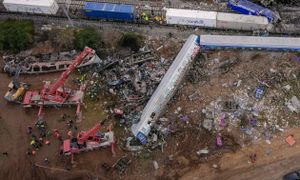Researchers have developed and analyzed numerical simulations to understand the pressure distribution dynamics within hydraulic jet perforation tunnels, aimed at enhancing natural gas hydrate extraction. This investigation is particularly noteworthy as natural gas hydrates are heralded as promising clean energy sources.
The study establishes a two-dimensional axisymmetric model to analyze the effects of various parameters influencing pressure distribution, which plays a pivotal role during natural gas extraction. These parameters include well completion methods, the diameter of the perforation tunnel, hole diameter on the casing wall, nozzle dimensions, and hydraulic jet characteristics.
Significantly, the research reveals key findings. The pressure inside the perforation tunnel consistently exceeds the surrounding confining pressure, demonstrating the effectiveness of hydraulic jet flow to induce internal pressure rises. Notably, under cemented casing completion conditions, the pressurization levels depend solely on the hole diameter on the casing wall, implicatively restricting the variability of the perforation tunnel root diameter.
The researchers conducted simulations using computational fluid dynamics (CFD) influenced by the Shear-Stress Transport k − ω turbulence model, allowing for comprehensive analysis of the fluid dynamics involved. Their findings indicate, for open-hole or uncemented casing wells, the effectiveness of hydraulic fracturing potentially diminishes with increased perforation tunnel root diameters, as the erosive impacts of hydraulic jets create less favorable conditions for efficient gas recovery.
Aside from basic findings on pressure dynamics, the study emphasizes the pressing need for effective solutions for natural gas extraction methodologies, drawing attention to the practical applications of hydraulic jet technology. The overarching implication is clear: utilizing hydraulic jet methods can potentially revolutionize the extraction processes involved with natural gas hydrates.
Looking forward, the results offer theoretical support for the widespread adoption of hydraulic jet fracturing technology as energy demands grow. They point to the feasibility of improved natural gas hydrate extraction methods, particularly from marine substrates consisting of soft, unconsolidated sediments.
The study concludes with overarching insights on the practicality of hydraulic jetting under variable completion scenarios and emphasizes the significance of adequately exploring pressure dynamics for future advancements. Through this numerical investigation, the field of natural gas hydrate extraction stands to benefit considerably, paving pathways for sustainable energy sources.



